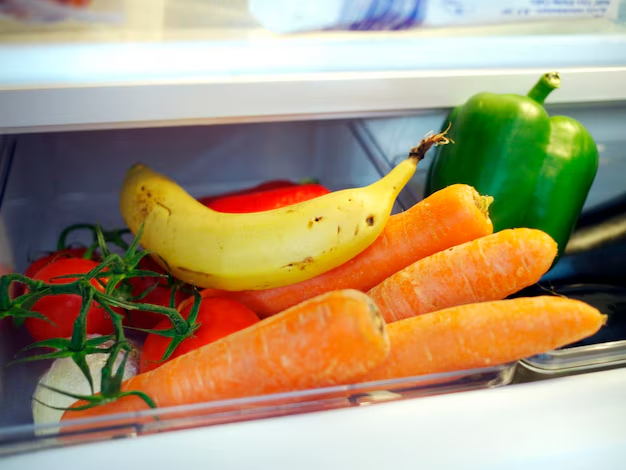How Long Do Chicken Wings Stay Fresh in the Fridge? A Complete Guide to Food Storage and Safety
Picture this: You’ve had a delightful gathering, and amidst the laughter and clinking of glasses, countless plates of scrumptious chicken wings were consumed. But what about the leftovers you placed in the fridge, waiting for a midnight snack or lunch tomorrow? It’s crucial to understand how long these chicken wings can be stored safely to ensure both delightful taste and good health. This comprehensive guide delves into the specifics of storing chicken wings in the refrigerator, alongside practical tips to keep your food fresh and delicious.
Understanding the Shelf Life of Chicken Wings
When it comes to chicken wings or any other perishable food, proper storage is key to maintaining freshness and preventing foodborne illnesses. Generally, cooked chicken wings stored in the refrigerator should be consumed within 3 to 4 days. This timeframe ensures optimal taste and safety. Here’s why paying attention to this is vital:
The Science Behind Food Spoilage
Food spoilage, particularly with chicken, is often caused by the growth of bacteria such as Salmonella or E. coli. These microorganisms thrive in "The Danger Zone," which is the temperature range between 40°F and 140°F (4°C and 60°C). Refrigeration at temperatures below 40°F (4°C) slows down bacterial growth, maintaining the chicken’s freshness longer.
Recognizing Signs of Spoiled Chicken Wings
Even within the recommended timeframe, it’s important to inspect your chicken wings for any signs of spoilage. Look out for:
- Discoloration: Chicken should maintain its neutral white or light pink hue. Any signs of gray or green coloration are red flags.
- Odor: A sour, sulfur-like, or rancid odor indicates spoilage.
- Texture: Slime or stickiness is a common sign of bacterial growth.
Best Practices for Storing Chicken Wings in the Fridge
Now that you know why the 3 to 4-day guideline is crucial, let’s explore some best practices to maximize your wings' shelf life in the fridge.
Proper Storage Techniques
Cool Down Quickly: Before refrigerating, allow your chicken wings to cool to room temperature. However, don’t leave them out for longer than two hours.
Use Airtight Containers: To preserve flavor and prevent contamination, store wings in airtight containers or wrap them tightly in aluminum foil or plastic wrap.
Label with Dates: Always label the container or wrapper with the storage date. This practice ensures you stay within the safe consumption window and minimizes food waste.
Keep the Fridge Cool: Ensure your refrigerator is set to 40°F (4°C) or below to maintain the ideal storage environment.
Can You Freeze Chicken Wings?
Freezing is an excellent option if you think you won’t finish your leftovers within the suggested time frame. Frozen chicken wings can last up to three months when stored at 0°F (-18°C) or below.
Freezing Tips:
- Individually Freeze: Freeze individual wings on a baking sheet before transferring them to prevent them from clumping together.
- Label Diligently: As with refrigeration, properly label your frozen batches with the date to ensure you consume them when they are still at peak quality.
Factors That Affect the Shelf Life of Chicken Wings
Several factors can influence the shelf life of your chicken wings. Let’s dig deeper into these factors so you can enjoy your wings safely and deliciously.
Quality of the Chicken
Freshness starts with the quality of the chicken you purchase. Buying chicken from reputable sources and confirming that it’s within its sell-by date is crucial for ensuring the longest possible shelf life.
Cooking Method
The cooking method also impacts storage life. Smoked or barbecued wings, for instance, might have a slightly longer shelf life due to their lower moisture content and reliance on preservative-like smoking techniques.
Cross-Contamination
Ensuring that chicken wings do not come into contact with other raw meats or contaminated surfaces helps reduce the risk of harmful bacterial growth.
Safety Tips: Ensuring Your Wings Are Safe to Eat
Keep It Clean: Always wash your hands and utensils after handling raw chicken to prevent cross-contamination.
Reheating Is Key: When reheating, bring the chicken wings to an internal temperature of 165°F (74°C) to kill any lingering bacteria. Using a meat thermometer can guarantee accuracy.
Chicken Wings and Meal Planning
Having a clear understanding of your chicken wings’ shelf life can also enhance meal planning, helping you balance nutrition and convenience.
Incorporating Leftovers Creatively
Instead of the typical reheating, consider these inventive uses for leftover chicken wings:
- Chicken Wing Salad: Shred the chicken and toss it with greens, nuts, and fruits for a refreshing salad.
- Buffalo Chicken Tacos: Debone the chicken, add some hot sauce, and layer it in a corn tortilla with your favorite taco toppings.
- Wing-Stuffed Peppers: Fill bell peppers with seasoned, chopped chicken wings, and bake for a delightful, healthy meal.
Summary of Key Points 📝
Here are the essential takeaways for storing chicken wings safely:
- Refrigeration Time: Store cooked chicken wings in the fridge for up to 3 to 4 days.
- Inspect for Freshness: Check color, odor, and texture for signs of spoilage.
- Storage: Use airtight containers and label with dates.
- Freezing: Freeze for up to three months; remember to label with freezing dates.
- Reheating Temperature: Always reheat to 165°F (74°C).
By adhering to these guidelines and tips, you can ensure that your beloved chicken wings remain safe, delightful, and ready whenever cravings strike. Remember, understanding proper food storage doesn’t just prevent waste—it enriches meals, ensures safety, and ultimately leads to a more enjoyable dining experience.
Enjoy every bite of those tasty wings with confidence, knowing they’re stored and prepared with care! 🍗
